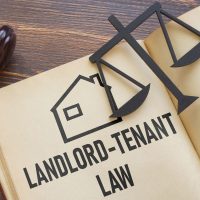What Landlords Need to Know About the Alternative Enforcement Program

For landlords in New York, particularly those operating multiple dwelling units, it’s crucial to be aware of the Alternative Enforcement Program (AEP) overseen by the Department of Housing Preservation and Development (HPD). This blog post aims to provide an informative overview of AEP, its implications for landlords, particularly with respect to lead paint and the steps required to comply with or avoid the program.
What Is the Alternative Enforcement Program (AEP)?
The AEP, established in 2007, is a pivotal enforcement tool for the HPD, targeting severely distressed buildings to ensure adherence to housing maintenance codes. The primary aim of the AEP is to address urban blight and compel landlords to swiftly remedy outstanding violations under the threat of significant civil penalties, which, if not addressed, can lead to foreclosure. The program emphasizes the rapid remediation of code violations, including lead paint violations, to enhance living conditions within New York’s housing stock.
Criteria for AEP Selection
Each year around January 31st, HPD selects buildings for the AEP based on the ratio of open hazardous and immediate hazardous violations issued in the preceding five years, including lead paint violations. Buildings with a high number of violations per apartment are targeted for inclusion. This selection is not optional, and once notified, landlords are obligated to take specific actions to be discharged from the program.
Obligations for Landlords Under AEP
-
Notification and Corrective Action: Landlords must notify tenants about the building’s inclusion in AEP and take corrective actions to address all heat, hot water, and class C violations, and a significant portion of class B violations, including those related to lead paint, mold and pests.
-
Financial Responsibilities: Payment of all outstanding fees and charges is mandatory, including those for inspections and HPD-performed work, or entering into a payment agreement with the Department of Finance. The landlord may also be charged a “management fee.” The cost charged by the AEP to remediate violations may be significantly more than voluntarily hiring a private contractor to correct violations.
-
Compliance and Penalties: Failure to comply with AEP requirements leads to considerable daily penalties and the potential for a lien against the property, leading to foreclosure in severe cases.
-
Engaging Professionals: Landlords should engage legal counsel, architects, engineers, and contractors to address violations promptly and effectively.
-
Documentation and Communication: Keeping all communications with HPD in writing and having experts certify the repairs can be crucial in demonstrating compliance.
Implications for Tenants
Tenants play a role in the AEP process. They are encouraged to report maintenance issues to landlords and HPD. If repair work is required, tenants must allow access to their apartments. Failure of the tenants to make their apartments available to the City for remediation, often because of fear about immigration status, is a common issue in AEP cases involving lead paint.
Avoiding AEP Inclusion
Proactive building maintenance, timely addressing of all violations, and maintaining up-to-date property registrations are key to avoiding AEP inclusion. Regular inspections and repairs can prevent the accumulation of violations that trigger AEP selection.
AEP: A Substantial Burden on NYC Landlords
The AEP represents a significant responsibility for landlords, with stringent requirements and severe penalties for non-compliance. It is a clear indication of New York City’s commitment to maintaining safe and habitable housing conditions. Landlords should remain vigilant in their property management practices to avoid the ramifications of AEP inclusion and ensure a safe living environment for their tenants.
For more detailed information on the Alternative Enforcement Program, landlords and tenants can refer to the official HPD website and relevant legal resources.
If you are a New York City landlord facing a lawsuit related to lead paint, mold or similar issues, call the Law Offices of Richard A. Fogel at 516-721-7161 for advice and representation from an experienced New York toxic tort defense attorney.
